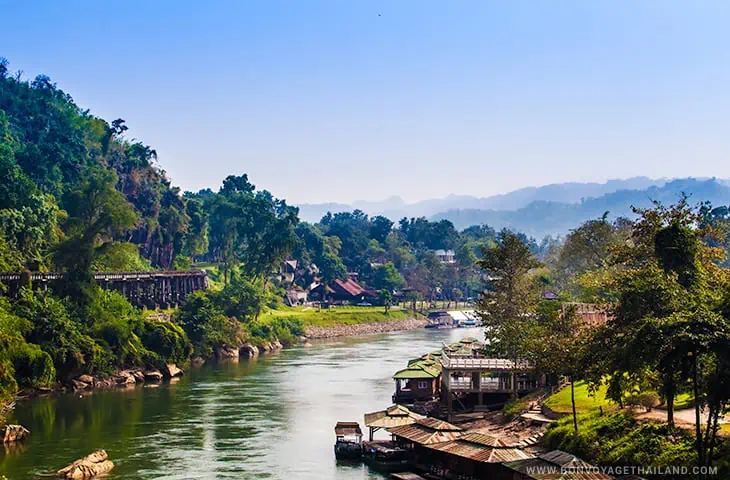
The Bridge over the River Kwai, located in the serene landscape of Kanchanaburi, Thailand, stands as a poignant symbol of the hardships endured during World War II. More than an engineering feat, it represents the resilience and suffering of those who built it under dire circumstances. Its fame was amplified by the 1957 film “The Bridge on the River Kwai,” though the reality of its history is far more harrowing.
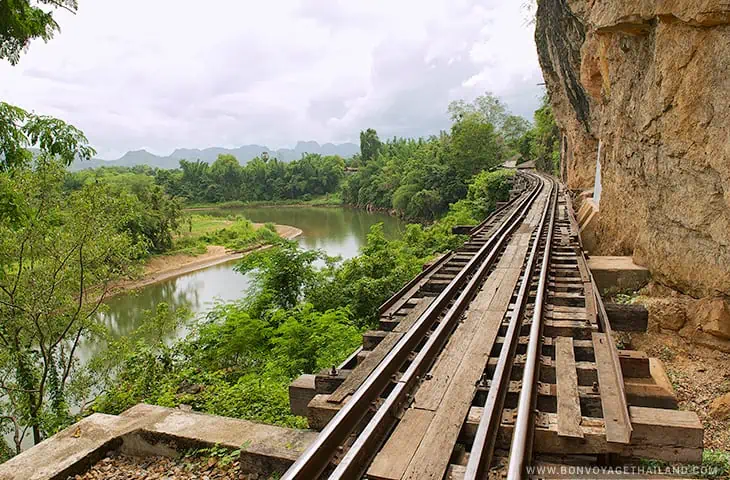
Constructed as part of the Burma Railway, the bridge was built by Allied prisoners of war (POWs) and Asian laborers under Japanese supervision. The railway, intended to connect Bangkok, Thailand, with Rangoon, Burma (now Yangon, Myanmar), is a testament to human endurance, survival, and the tragic loss of life, earning it the nickname “Death Railway.”
Presently, the bridge draws visitors not just for its architectural and historical importance but as a somber memorial to those who perished under brutal conditions. The Death Railway Museum and Research Center in Kanchanaburi is crucial for understanding the bridge’s true significance. It offers in-depth exhibitions and programs on the construction of the Burma Railway, the lives of the POWs and laborers, and the wider war context in the Asia-Pacific.
The Bridge over the River Kwai and Kanchanaburi’s related historical sites are invaluable for anyone interested in World War II history, providing deep insights into human resilience amidst adversity.
Table of Contents
Construction of the Burma-Siam railroad
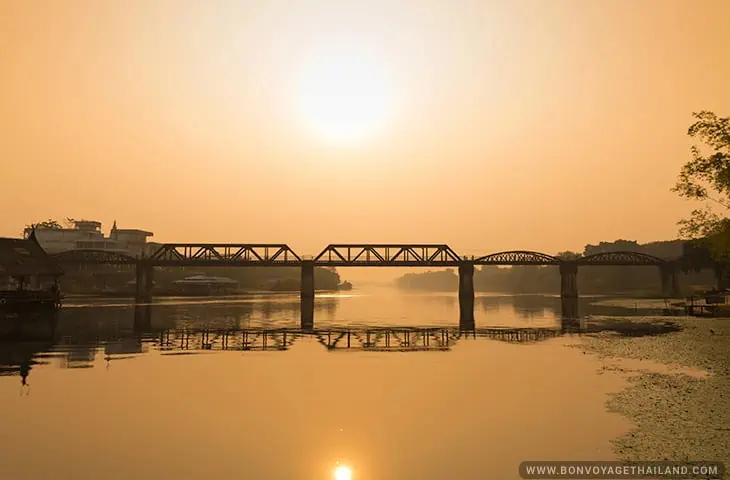
The Burma-Siam Railway, a remarkable engineering achievement, was constructed amidst the harrowing conditions of the Second World War. Spearheaded by the Japanese military, it involved the forced labor of over 60,000 Allied prisoners of war (POWs) and approximately 200,000 Asian laborers. These individuals faced brutal conditions, enduring severe malnutrition, diseases, and physical abuse, leading to the death of thousands and bestowing upon the railway its grim moniker, “Death Railway.”
Completed within a brief period from June 1942 to October 1943, this feat was accomplished despite the challenging terrain, including dense jungles and steep mountains. The relentless push for rapid construction forced laborers to work extensive hours without sufficient food, water, or medical care.
The railway stretched 415 kilometers (about 258 miles) from Ban Pong, Thailand, to Thanbyuzayat, Burma, and included the construction of numerous bridges, viaducts, and cuttings, often with basic hand tools and no modern machinery. Among these, the bridge over the River Kwai stands out for its notoriety and engineering significance.
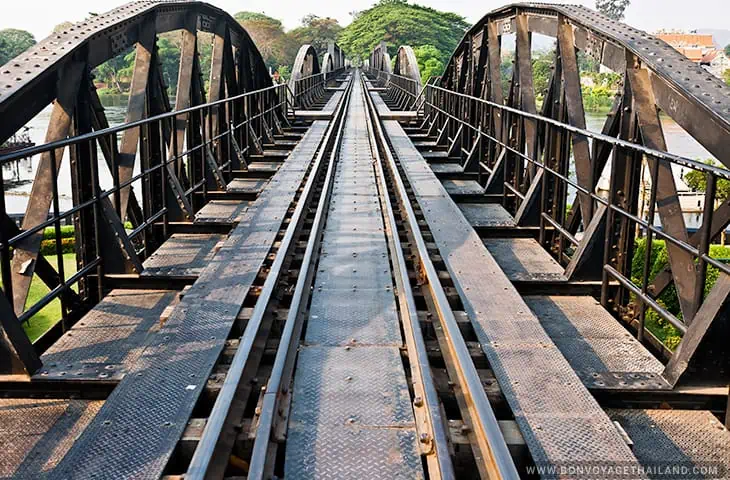
Despite its strategic importance, which made it a target for Allied bombings to disrupt Japanese supplies, the railway’s construction is a testament to human endurance and engineering prowess under the most dire conditions.
Currently, parts of the railway remain operational, serving as a living reminder of its historical significance and the immense human suffering that accompanied its construction. Attractions along its route, such as the Death Railway Museum and the Hellfire Pass Memorial, offer poignant reflections on the cost of war and the resilience of those who built this monumental project under the most adverse conditions.
Hellfire Pass: A Symbol of Endurance
Hellfire Pass stands as a harrowing symbol of the hardships endured by Allied POWs and Asian laborers forced into backbreaking manual labor during World War II by the Japanese. Named for the haunting light of torches that illuminated the workers at night, creating a scene reminiscent of hell, this section of the Death Railway was notorious for its brutal working conditions, including extreme work hours, insufficient food, prevalent diseases, and severe punishment.
The area’s high death toll highlights the severe human cost of the railway’s construction, where laborers suffered immensely under inhumane conditions. Today, the Hellfire Pass Memorial Museum, significantly supported by the Australian government, honors the memory of those who perished. It provides a comprehensive history through personal stories, photos, and artifacts, alongside interactive exhibits and audio guides with survivors’ accounts, offering a powerful insight into the POWs’ relentless struggle for survival.
This memorial not only pays tribute to the victims but also serves as a lasting reminder of human resilience and the atrocities of war, ensuring the stories of Hellfire Pass’s survivors continue to educate and move future generations.
Kanchanaburi War Cemetery
The Kanchanaburi War Cemetery, also known as Don-Rak War Cemetery, occupies a somber but significant place in the annals of World War II history. Located in Thailand, near the infamous Burma Railway construction site, it serves as the final resting place for thousands of Allied prisoners of war (POWs) who lost their lives during the construction of the so-called “Death Railway”. Managed by the Commonwealth War Graves Commission, the cemetery is a reminder of the harsh conditions faced by those who were forced to work under the Imperial Japanese Army.
The cemetery contains the graves of almost 7,000 soldiers, mainly from Commonwealth countries including the UK, Australia, Canada and New Zealand. It also contains graves of other nationalities involved in the construction of the railroad, embodying the diverse groups of people who shared a common fate in this tragic chapter of history. The carefully maintained grounds and the uniformity of the headstones emphasize the collective sacrifice of these people, regardless of their rank or nationality.
The Kanchanaburi War Cemetery serves not only as a burial site, but also as a memorial and place of reflection for visitors from all over the world. It highlights the inhumane conditions that prisoners of war were subjected to, such as malnutrition, disease and overwork, which contributed to the high death toll among those forced to build the railroad. The existence of the cemetery underlines the importance of remembering those who suffered and died in such terrible circumstances and ensuring that the lessons of history are not forgotten.
Riding the Death Railway Today
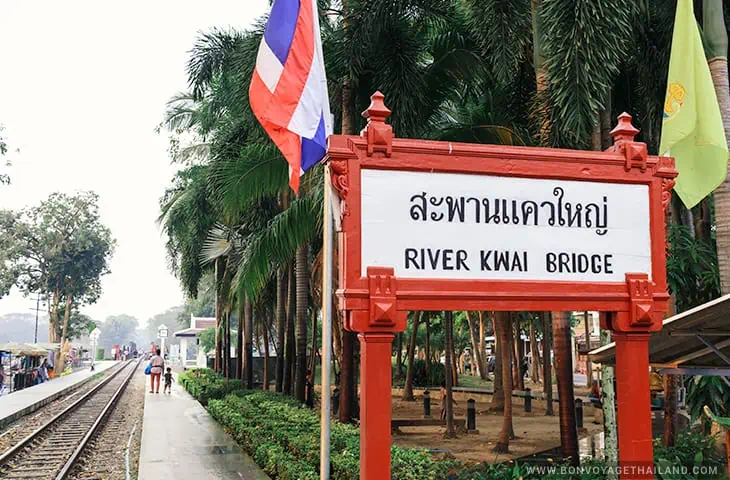
Exploring the historic Death Railway offers a unique journey through time, combining breathtaking natural beauty with poignant historical insights. For those looking to experience this legendary railway today, several options are available, catering to different preferences and starting points.
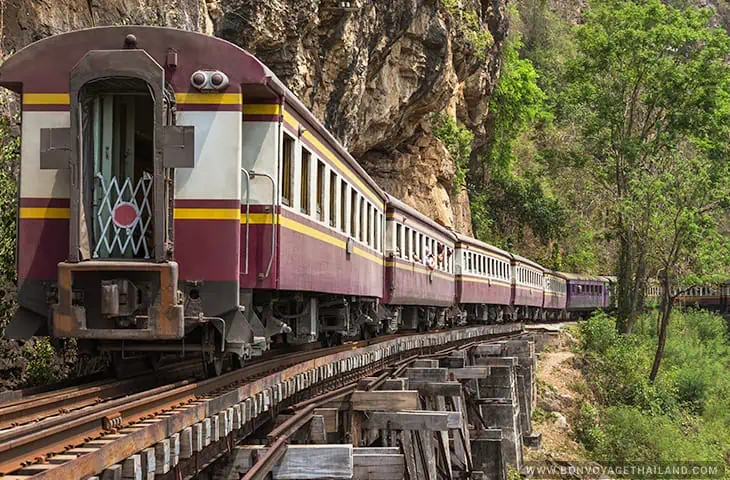
One popular choice is taking a third-class local train from Thonburi station in Bangkok to Nam Tok, the current terminus of the line. This route offers an authentic local travel experience, allowing passengers to witness the daily life of the regions through which the railway passes. For a more curated experience, weekend excursion trains run from Hualamphong station, providing a comfortable and scenic journey to the historic track.
Travelers can also opt to join the railway at Kanchanaburi or Saphan Kwae Yai station, embarking on the picturesque final part of the journey. This segment is particularly renowned for its passage through the Wang Pho viaduct, where trains skirt along cliff faces and offer stunning views over the river and surrounding jungle. The experience of traversing this section is not just visually spectacular but also evokes a deep sense of reflection on the railway’s historical context.
Beyond the train ride itself, a visit to Hellfire Pass offers a profound historical complement to the journey. This site, where POWs and forced laborers faced some of the harshest conditions during the railway’s construction, now hosts a self-guided walking tour and a museum. The walking trail through Hellfire Pass, with its audio guide filled with survivor testimonies and historical details, provides a moving insight into the human stories behind the railway. The museum further enriches visitors’ understanding, making a visit to Hellfire Pass an essential part of the Death Railway experience.
Together, these train ride options and the visit to historic monuments like Hellfire Pass offer a comprehensive and immersive way to connect with the legacy of the Death Railway. Travelers can appreciate not only the engineering achievement and scenic beauty but also the profound human stories that shaped this chapter of history.
How to Get There
For those looking to immerse themselves in the rich history and breathtaking landscapes along the Death Railway, our travel agency offers both join and private tours tailored to a wide range of interests and preferences. Whether you’re looking for the camaraderie of a group or the personal touch of a private trip, we’ve got you covered.
For those who prefer a more personalized experience, our private tours offer the flexibility to tailor your itinerary to your specific interests. Whether you choose to spend more time at the Hellfire Pass Museum, enjoy a leisurely train ride or explore places off the beaten path, our private tours are designed around your wishes and guarantee a personalized and memorable exploration of this historic railroad.
To book your trip or find out more about our tour options, please contact us. Our team is dedicated to providing you with an unforgettable travel experience by guiding you through the historic landscapes of the Death Railway with expertise and care. We’ll help you embark on a journey that not only captures the beauty and history of these places, but also honors the legacy of those who built them.
